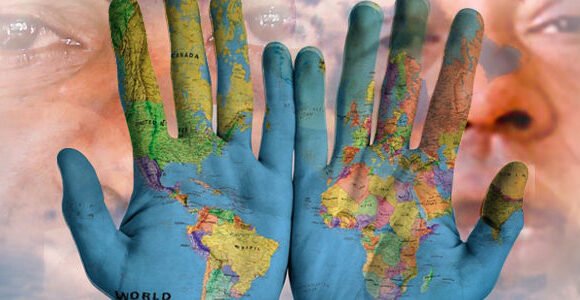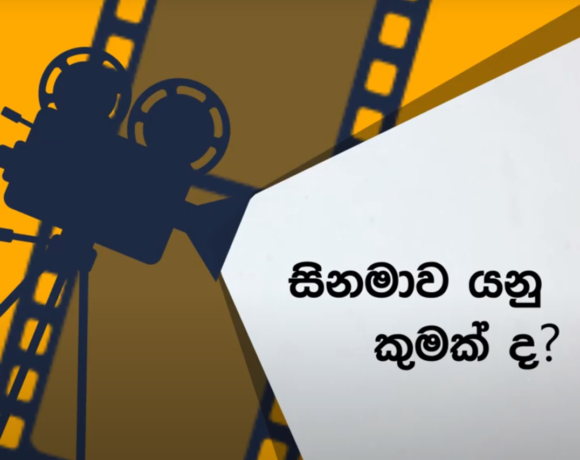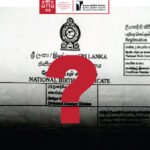SARATH MANULAWICKRAMA
A saffron tilak (Pottu) on the forehead indicates not ethnic identity, but unity in the North. The five sins preached in Buddhism are words are emanating from the Tamil language typical of the Hindus. This is another story of the people of the North refusing to be divided on the basis of language or religion.
Kumarihami, now 73, was born in Madhu, Mannar district. She left the Mannar area during the war and returned to the village of Wickampura in Mannar in 2010. It is located along the Medawachchiya-Mannar Road to Madhu Church. It is on the north and Malwathu Oya on the other side. The path is called Madhu Road. Mrs. A.W. Premawathi, 66, lives with her mother Kumarihami, says that Malwathu Oya reminds her of the Sri Maha Bodhi in Anuradhapura and the Madupalliya reminds her of nearness to Christianity.
The situation here is different. There is joy in going to temples, regardless of whether it is Sinhala, Tamil, Buddhist or Hindu. Everybody in the village prays according to their faith. Even those who are not Christian, go to Madhu Church. Muslims families are few in the area, yet they also share commonalities and they are doing business here. There are about 50 Sinhala families within this community who are happily coexisting. We share the grief and happiness of all.
Mr. Siran is one of the most prominent leaders of the area engaged in people’s wellbeing. He is popularly known as Siran but his full name is Gnanaprakash Mariyasiran. He is also a member of the Nanattan Pradeshiya Sabha. Mr. Mariyasiran stands out among the many representatives because he fights for the rights of people regardless of whether they are Sinhalese or Muslim. He appropriates funds received from the central government for the development of temples, churches and mosques.
“I represent the UNP, and am the only Tamil member in the Pradeshiya Sabha from the UNP in the entire district. The other MPs are from the TNA. They control the Saba. I don’t get their backing for my activities; neither do I get any finances. Therefore, I have put in place proposals to address various shortcomings in our area and there was only one Ministry that responded to it positively. It is the ministry of Mano Ganeshan. With that fund I helped the Buddhist temples as well. There is much work to be done in this province,” remarked Mr. Siran.
The monk who attended the unveiling of the Pinnacle of the new Stupa, built at the Sri Bodhiraja Viharaya said that this temple is not a place for showing Buddhist power but a common center for all communities to come together. The Chief Incumbent of the Abayagiriya Purwaramaya Ven. Pothane Dhammananda Thero stated that the Bodhiraja Vihara is a gathering place for the coexistence of various communities in the North.
”This place was built long before the turmoil in the country. During the war no one destroyed this place because it was a place for everyone. The monks who have long maintained and devotees who helped the Sri Bodhi Raja Temple at Madhu Road should also be remembered by all. Buddhist, Hindus and Catholics in this area come to this Buddhist temple to worship without any differences. The people here live in unity. The police, the armed forces, and many dedicated political leaders are there to help and support places like these”, Pothane Dhammananda Thero says. Ven. Siri Bharathi Nayaka Thera said that this temple is a great place for the Buddhist people living in the area and a place for providing religious services as well as social services for the public and devotees visiting the Northern Province. Kosgoda Rathanasila Thero and other Theros from Maha Sangha continue to visit this place.
The Dagoba and Maluwa have been developed with the assistance of the police and the armed forces as well as local and foreign donors. Government officials of the area, Mannar Police Superintendent Pandula Weerasinghe and other Police officers and Army personnel including the commanding officer of the 542 Division of the Sri Lanka Army also attended the event. It is noteworthy that on that day the people of all religions and ethnicities joined together to offer alms to the Bhikkus and to have lunch together.
This article was originally published on the catamaran.com









